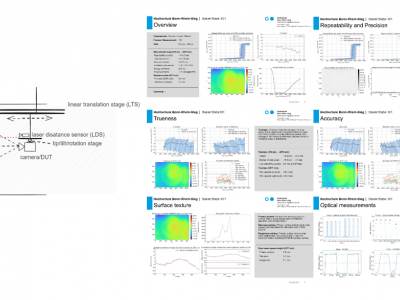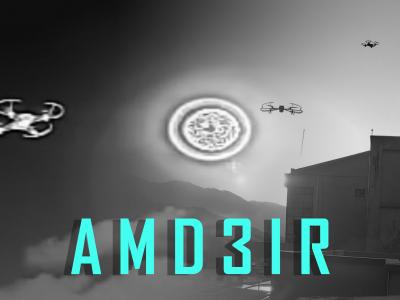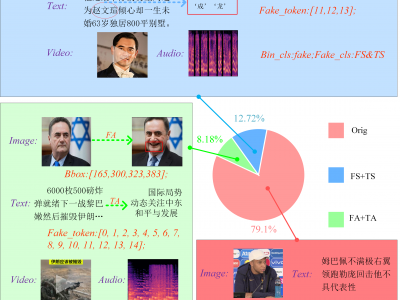Image Processing

LIVE-Viasat Real-World Satellite QoE Database contains 179 videos from real-world streaming, encompassing a range of distortions. Enhanced by a study with 54 participants providing detailed QoE feedback, our work not only provides a rich analysis of the determinants of subjective QoE but also delves into how various streaming impairments influence user behavior, thereby offering a more holistic understanding of user satisfaction.
- Categories:
 13 Views
13 Views
LIVE-Viasat Real-World Satellite QoE Database contains 179 videos from real-world streaming, encompassing a range of distortions. Enhanced by a study with 54 participants providing detailed QoE feedback, our work not only provides a rich analysis of the determinants of subjective QoE but also delves into how various streaming impairments influence user behavior, thereby offering a more holistic understanding of user satisfaction.
- Categories:
 15 Views
15 Viewsdataset on Indian banknotes that was collected to aid research in fields like financial technology, security, and machine learning. The collection contains notes for both older and more recent generations of Indian currency, including ₹1, ₹2, ₹5, ₹10, ₹20, ₹50, ₹100, ₹200, and ₹500. Each note has been carefully scanned and sorted. Important details have been noted, including the note's design, serial number, and security features including small printed text, security threads, and watermarks. We systematically gathered, checked, and labeled every note in order to create this dataset.
- Categories:
 302 Views
302 ViewsThis dataset accompanies the study “Universal Metrics to Characterize the Performance of Imaging 3D Measurement Systems with a Focus on Static Indoor Scenes” and provides all measurement data, processing scripts, and evaluation code necessary to reproduce the results. It includes raw and processed point cloud data from six state-of-the-art 3D measurement systems, captured under standardized conditions. Additionally, the dataset contains high-speed sensor measurements of the cameras’ active illumination, offering insights into their optical emission characteristics.
- Categories:
 139 Views
139 ViewsWith the gradual maturity of UAV technology, it can provide extremely powerful support for smart agriculture and precise monitoring. Currently, there is no dataset related to green walnuts in the field of agricultural computer vision. Therefore, in order to promote the algorithm design in the field of agricultural computer vision, we used UAV to collect remote sensing data from 8 walnut sample plots.
- Categories:
 206 Views
206 ViewsThe dataset comprises images generated using computational fluid dynamics (CFD) simulations for two cases: flow past an elliptic cylinder and flow past an aerofoil. Here are the details:
Elliptic Cylinder Dataset:
Images: 124 for low-speed and 124 for high-speed.
Conditions: Simulated for Reynolds numbers of 200 (low-speed) and 5000 (high-speed).
Aerofoil Dataset:
Images: 250 for low-speed and 250 for high-speed.
Conditions: Simulated under similar Reynolds number settings of 200 and 5000 for laminar and turbulent flows, respectively.
- Categories:
 152 Views
152 ViewsThe AMD3IR dataset is a large-scale collection of Shortwave Infrared (SWIR) and Longwave Infrared (LWIR) images, designed to advance the ongoing research in the field of drone detection and tracking. It efficiently addresses key challenges such as detecting and distinguishing small airborne objects, differentiating drones from background clutter, and overcoming visibility limitations present in conventional imaging. The dataset comprises 20,865 SWIR images with 24,994 annotated drones and 8,696 LWIR images with 10,400 annotated drones, featuring various UAV models.
- Categories:
 546 Views
546 ViewsDLSF is the first dedicated dataset for Text-Image Synchronization Forgery (TISF) in multimodal media. The source data for this dataset is scraped from the Chinese news aggregation platform, Toutiao. This dataset includes extensive text, image, and audio-video data from news articles involving politicians and celebrities, featuring samples of both entity-level and attribute-level TISF. It provides comprehensive annotations, including labels for text-image authenticity, types of TISF, image forgery regions, and text forgery tokens.
- Categories:
 107 Views
107 Views
Addressing the limitations and inconveniences imposed by the randomness in moiré pattern generation on deep learning model training, we have constructed the SynMoiré dataset through a synthetic approach to generate moiré images. The construction process involves resampling the original images into an RGB sub-pixel format, applying random projection transformations, radial distortions, and Gaussian filtering to simulate camera effects.
- Categories:
 18 Views
18 Views





